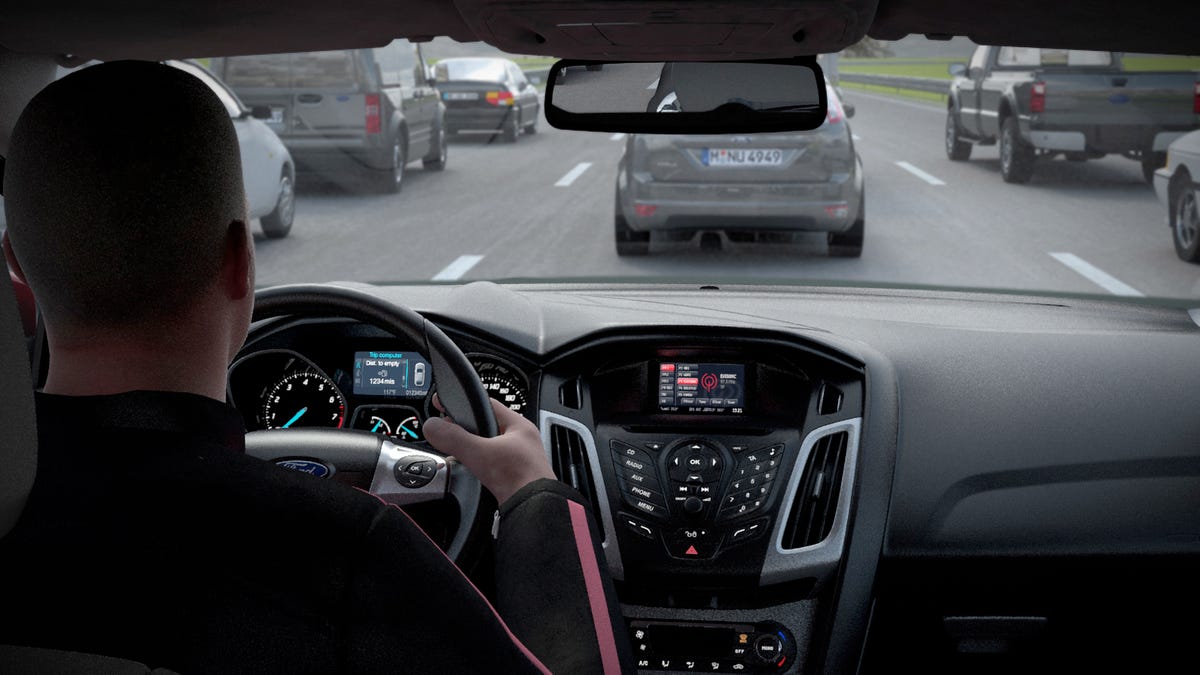Traffic Jam Assist for the masses? In about five years
Ford will make this semi-autonomous technology available for mainstream vehicle buyers, which will reduce driving times and fuel consumption for everyone.

In the next 12-24 months, luxury vehicles will hit the roads with the driver physically at the wheel, but his mind potentially elsewhere. Audi, BMW, and Mercedes have all demonstrated semi-autonomous "traffic jam assistants" that will do the driving in bumper-to-bumper traffic, lessening the stress of the daily commute. But what about for the equally tense driver of your non-luxury vehicle? Luckily, Ford is working to bring that same frill to the mainstream buyer.
Ford announced in a news statement that it, too, is developing a semi-autonomous system for its vehicles. The "Traffic Jam Assistant" is an emerging safety feature that will enable the vehicle to keep a safe distance between it and the vehicle in front, while maintaining lane position, without requiring the constant braking, accelerating, and attention from the driver. The solution should lessen the burden of traveling on congested roads, and if enough vehicles have this technology, it could also improve traffic flow and reduce vehicle fuel consumption.
The company estimates that only 25 percent of vehicles will need to be equipped with some form of traffic jam assistant to reduce travel times by 37.5 percent. Bringing this technology to mainstream vehicles will be crucial to achieving this tipping point.
Although many of the technologies required to make this new feature a reality, such as blind spot detection, adaptive cruise control, and lane departure prevention, already exist or will soon be available in Ford vehicles, traffic jam assistant for the masses is still years away. Ford describes this system as a midterm feature that should appear in vehicles in about five years. Engineers are still developing this technology to make it more robust and are researching the optimal hardware so that it can properly function in all traffic situations.
Audi plans to debut a traffic jam assistant in the A8, and you can expect that same feature in the BMW i3 in 2014. Mercedes was the first to demo this technology in its F800 Style research vehicle. Although Ford is the first non-luxury brand to announce this feature, five years is still a long ways off, and it's anybody's guess in which Ford vehicles this technology will appear first.
"Ford's strategy is to make affordable technology available to all customers, and to migrate technology to all vehicles as soon as possible," says Ford spokesperson Alan Hall.
Unlike many brands that reserve the latest bells and whistles for their highest-end vehicles, Ford first debuted its Sync telematics platform in the budget-friendly Focus. The first vehicles to get the upcoming Lane Keeping Aid feature will be the 2013 Ford Explorer, Ford Fusion, and Lincoln MKZ.
Headed to market sooner will be a perpendicular parking feature, which will automatically reverse the vehicle into a parking space for the driver. Ford already offers an automatic parallel parking technology in several vehicles, which lets the driver parallel park a car hands-free. All that's needed to make perpendicular parking work is the addition of two ultrasonic sensors, one in each rear quarter panel, explained Hall.
Automatic parking may sound gimmicky, but all of these driver assistance features are incremental steps car manufacturers and drivers need to take before fully autonomous vehicles can take over.

